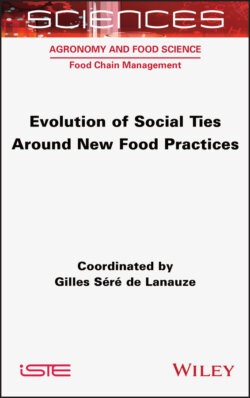Читать книгу Evolution of Social Ties around New Food Practices - Группа авторов - Страница 22
1.3.2.1. Step 1: Semi-structured interviews based on projective collages
ОглавлениеThe qualitative approach involves looking for diversity of practices, with the aim of understanding the mechanisms of adoption of these varied practices. Turrentine and Kurani (2007) propose a sampling method known as “illustrative sampling” which aims to ensure the diversity of the object studied. As our qualitative approach involves looking for diversity of practices, the first step of this sampling method consists of studying the determinants of the phenomenon (socio-demographic, motivations, etc.) in order to know on “which diversity” it is most relevant to base the selection of the individuals in the sample. For example, it has been shown that which socio-professional category an individual belongs to conditions their involvement in food (Plessz and Gojard 2014), which can impact the importance given to meals. Similarly, it is relevant to choose households of different “types” (e.g. a couple, friends sharing a flat, family with children, etc.), which seem to generate different practices (CREDOC 2017), just like the fact that the nature of the relationship with people at the table conditions food intake (De Castro 1994). Thus, we selected households of varying socio-professional categorues and size and where relationships vary: family relationships, roommates, etc. It should be noted that the approach does not aim to compare households with each other, but to determine which characteristics should be used to generate the most variability. The sample thus guarantees a variety of practices with respect to eating together by varying the age, the number of people in the home and whether or not there are children. Twenty-three participants were recruited via an Internet mailing list (Appendix, section 1.8).
The projective collage method consists of asking individuals to paste together images to represent what they think or imagine about a situation or concept. Projective methods have been developed primarily as a dialogue facilitator. They are generally used to reduce bias, to study individual perceptions and to access unconscious processes or mental images in consumers. Collage allows consumers to express themselves without introducing bias.
In this study, the collage was used to provide respondents with a self-constructed discussion aid in a time prior to the interview, to address a topic (the organization of daily eating together) which can be tricky to transcribe in an impromptu discussion. The poster was not analyzed as such.
To make the poster, participants were given a magazine. The participants were given the following instructions:
Make a poster that represents your food practices: from shopping to consumption, and represent what conditions your food organization. You have at your disposal magazines, cutting and pasting materials, and drawing materials. You have as much time as you want for this workshop. Once completed, we will discuss this poster, it will not be interpreted without your help.
The collages were made individually by each of the 23 study participants. Participants were only informed that the study was about eating practices, so as not to focus their attention on the issue of eating together.
Participants took an average of 40 minutes to complete the exercise (e.g. Figure 1.2).
The collage method allowed us to recall and develop detailed descriptions of the individuals’ daily activities, and to know the links that connect them.
Following this creative phase, an interview was conducted with the support of the poster. The interviews were recorded and transcribed. Non-targeted thematic coding was conducted in an exploratory approach. The coding was carried out by continuous thematization, which amounts to constituting the themes as the interviews were analyzed, which were taken in the alphabetical order of the participants’ names. The analysis was based on this coding in order to identify the different practices of eating together and to characterize the elements necessary for their implementation.
In order to understand the context in which the described practices are embedded, the projective/discursive collection is combined with an observed/discursive data collection, as presented below.
Figure 1.2. Example of a projective collage (Paola). For a color version of this figure, see www.iste.co.uk/seredelanauze/evolution.zip
